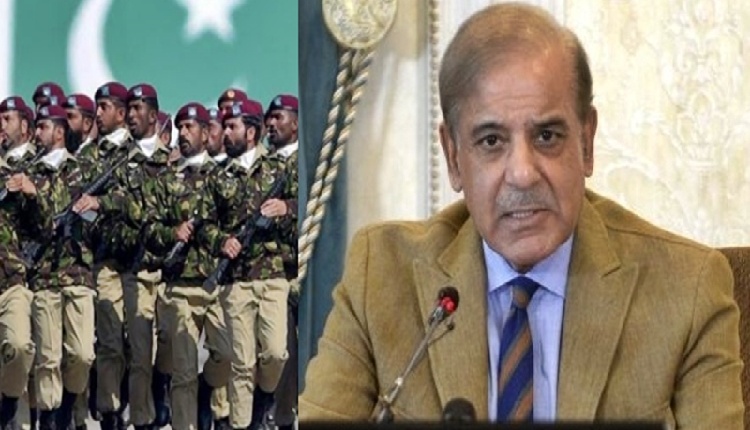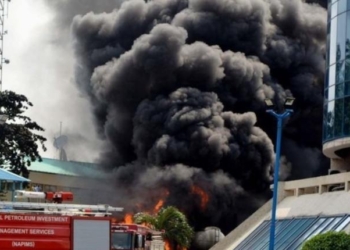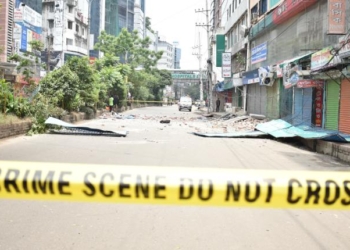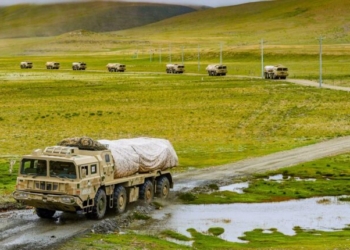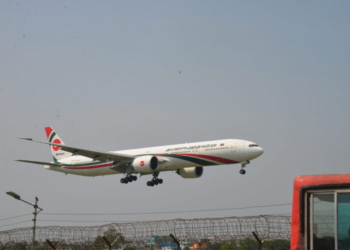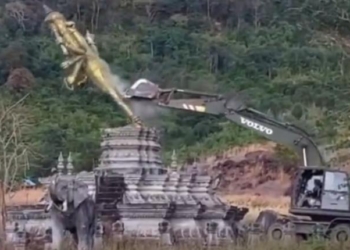New Delhi: Pakistan currently finds itself in a state of profound crisis, marked by an economy on the brink of collapse, soaring inflation, widespread joblessness, chronic poverty, and persistent internal security challenges amidst prolonged political turmoil. Yet, in these dire conditions, the military-dominated establishment continues to wield unyielding control over Pakistani society, suppressing any form of dissent against the state.
In contrast, Bangladesh recently underwent notable political upheaval when a popular student-led movement, driven by comparatively less severe grievances, succeeded in unseating Sheikh Hasina’s government on August 5. This stark difference raises pivotal questions about the political will and agency of the Pakistani populace, which appear to bolster the narrative of the Pakistani Army’s supposed invincibility. This article delves into the political and economic landscapes of Pakistan and Bangladesh, exploring the factors that have prevented Pakistanis from mobilising to reclaim their democratic institutions from decades of military hegemony.
Since 2010, Bangladesh’s economy experienced remarkable growth under Sheikh Hasina’s leadership, expanding at an average annual rate of over 6 per cent and peaking at 7.9 per cent in 2018. This impressive economic trajectory positioned Bangladesh as the ‘Asian Tiger’ of the region. A robust rise in exports and inward remittances from its burgeoning diaspora saw foreign exchange reserves soar to $48 billion by August 2021, a significant economic achievement. However, the global economic fallout from the COVID-19 pandemic and the Russia-Ukraine conflict brought about stagnation.
Exports and remittances declined sharply, and by 2024, foreign reserves had plummeted to $18 billion. The economy also faced challenges in generating adequate employment opportunities for its youthful population, while inflation surged to 9.7 per cent by June 2024, escalating the cost of living for many Bangladeshis. Moreover, Sheikh Hasina’s administration was further marred by widespread corruption among officials. Consequently, when student protests against job reservations erupted in June, these grievances quickly evolved into a broader popular movement, with citizens demanding the government address the escalating economic woes.
In stark contrast, Pakistan finds itself ensnared in a self-inflicted economic quagmire, primarily a result of the enduring dominance of the military establishment and its allied civilian elites. For example, despite securing yet another IMF bailout in May 2024, Pakistan’s foreign reserves — crucial for maintaining its import lifeline — dropped to a precarious $9 billion by June 2024, barely enough to cover four weeks of imports. Additionally, the country’s external debt obligations exceed $130 billion, largely owed to China, accounting for over 37 per cent of its GDP. Servicing this debt has become a significant challenge, consuming a substantial portion of the government’s annual revenues and locking Pakistan into a tight fiscal corner.
The situation is further exacerbated by spiralling retail inflation, which soared to over 12.6 per cent by June 2024, intensifying the cost of living pressures on ordinary Pakistanis. Moreover, nearly 40 per cent of the population — over 98 million people — lives in multidimensional poverty, with the World Bank cautioning that an additional 10 million could be pushed into poverty if the economy does not recover. Given the government’s ongoing (mis)management, this scenario appears increasingly likely. Yet, despite these dire economic conditions and pervasive corruption within the government, the military-controlled establishment continues to stifle any dissent against its rule.
Bangladesh and Pakistan also exhibit markedly different dynamics when it comes to internal security and political freedoms. While the government in Dhaka was ousted by popular dissent, the military-backed civilian administration in Islamabad remains firmly entrenched, despite its repeated failures to safeguard its citizens and nurture democratic growth. Following a tumultuous decade in the 2000s, Bangladesh achieved a degree of stability under Sheikh Hasina’s leadership from 2009 onwards. Her government effectively dismantled radical elements through a robust counter-terrorism strategy, and by 2013, the country was stable enough to pivot towards economic growth.
The only notable similarity between the two nations lies in their restrictions on political freedoms for opposition parties. In recent years, the ousted Bangladeshi Prime Minister had adopted increasingly autocratic measures, particularly in her dealings with the main opposition leader, Begum Khaleda Zia, and the Bangladesh Nationalist Party (BNP). This authoritarian drift also fuelled widespread discontent against Sheikh Hasina.
In contrast, Pakistan remains as unstable and vulnerable as ever, with its internal security apparatus largely ineffective against the resurgence of militant groups capable of orchestrating violence at will. For example, on August 26, 2024, a deadly attack in Balochistan claimed the lives of 38 civilians, starkly highlighting the deteriorating security landscape and the military’s failure to safeguard the country both internally and externally.
Furthermore, in the first four months of 2024 alone, Pakistan endured over 245 terror-related incidents, resulting in the deaths of more than 136 civilians and 127 security personnel. The Pakistan Army, deeply engrossed in political manipulation and pursuing economic gains, has shown itself to be incapable of managing the escalating security crisis. Despite this glaring failure to stabilise the nation, the military establishment, rather than addressing the threats, continues to cling to power and suppress any dissent that seeks to hold it accountable.
Many may wonder how Pakistan’s military establishment maintains such a firm grip over state institutions and quashes all dissent against its authoritarian rule. The simplest explanation lies in its long-standing history of political meddling — both overtly through coups and covertly through electoral manipulation — to control political actors and safeguard its vast economic interests, which have expanded massively over the decades, with some estimates placing the military’s commercial assets above $20 billion.
Since the first coup in 1958, when General Ayub Khan seized power and declared himself president, the military has never truly relinquished control, even during periods of civilian governance. Instead, it has deeply embedded itself within state structures, stifling any chance for democracy to flourish. As the most powerful state entity, the military continues to overshadow all civilian institutions, including the executive. The blatant rigging of the February 8 general elections to install its preferred political actor is the latest example of its ongoing ability to manipulate the country’s political landscape. These actions are all geared towards preserving the economic interests and institutional dominance of the military establishment.
This political manipulation is closely reinforced by the Pakistan Army’s near-total control over the country’s information and media landscape. It has imposed strict boundaries on media organisations and professionals, enforced with harsh penalties for anyone who dares to cross them, including judicial and extra-judicial measures. For example, after being compelled to flee Pakistan, prominent TV journalist Arshad Sharif was killed in Kenya in 2023, with suspicions pointing towards the involvement of Pakistan’s intelligence agency, the ISI.
Likewise, Imran Riaz Khan was abducted for more than four months following the anti-establishment protests on May 9, 2023, and Asad Ali Toor was detained in 2024 for exposing election fraud. These repressive tactics, combined with restrictions on internet freedoms, ensure that the military’s version of events remains the dominant narrative accessible to Pakistanis, thereby stifling any form of dissent against the regime.
The Pakistan Army’s grip extends well beyond media censorship; it also permeates the militarised operations across the tribal areas of Khyber-Pakhtunkhwa and large parts of Balochistan, where political dissidents are routinely abducted in these economically deprived regions. The military continues to wield brute force against these communities, resorting to enforced disappearances as a regular tactic. The harsh crackdown on Baloch women protesters and Pashtun nationalists further illustrates the military’s imperialist approach to managing these marginalised regions.
Thus, it becomes starkly evident that, despite escalating economic crises, worsening internal security, restricted political freedoms, and intensified media censorship, the Pakistan Army-led establishment has criminalised all forms of anti-government dissent. This has rendered political expressions of opposition, like those seen in Bangladesh, exceedingly difficult, especially in light of the military trials of civilians involved in the anti-government protests of May 2023. Consequently, the rise of any organised political movement appears highly improbable, unless the people themselves choose to break their complacency and free themselves from the grip of the Pakistan Army’s hegemonic rule.
It is therefore clear that despite worsening economic conditions, escalating internal insecurity, restricted political freedoms, and intensified media control, the Pakistan Army-led establishment has effectively criminalised all forms of anti-government dissent. Unlike in Bangladesh, this has severely curtailed the possibility of political movements taking root, especially after the military trials of civilians involved in the May 2023 anti-government protests. As a result, the chances of any organised political uprising seem remote — unless the people decide to rise above their complacency and throw off the yoke of military rule.
(IANS)




